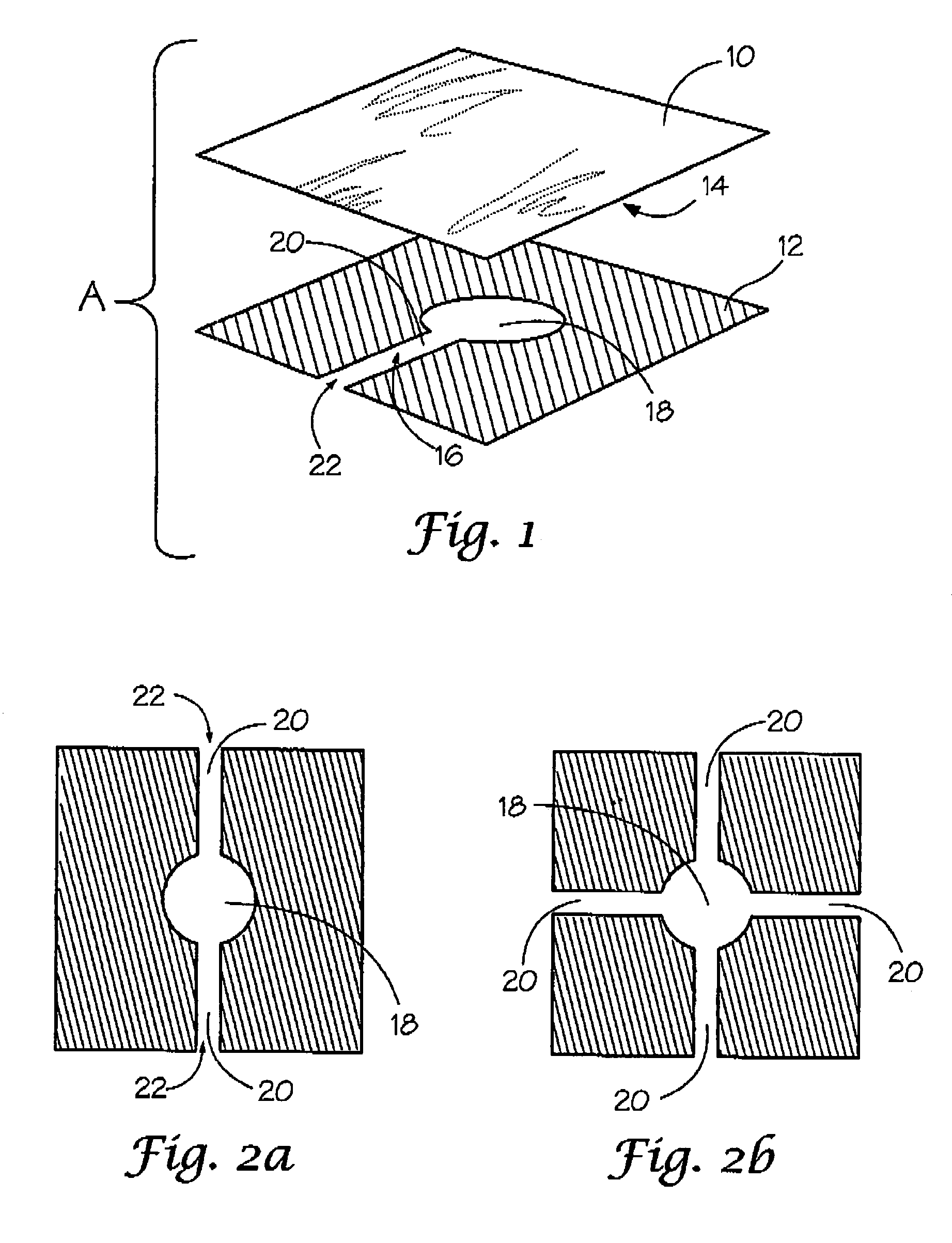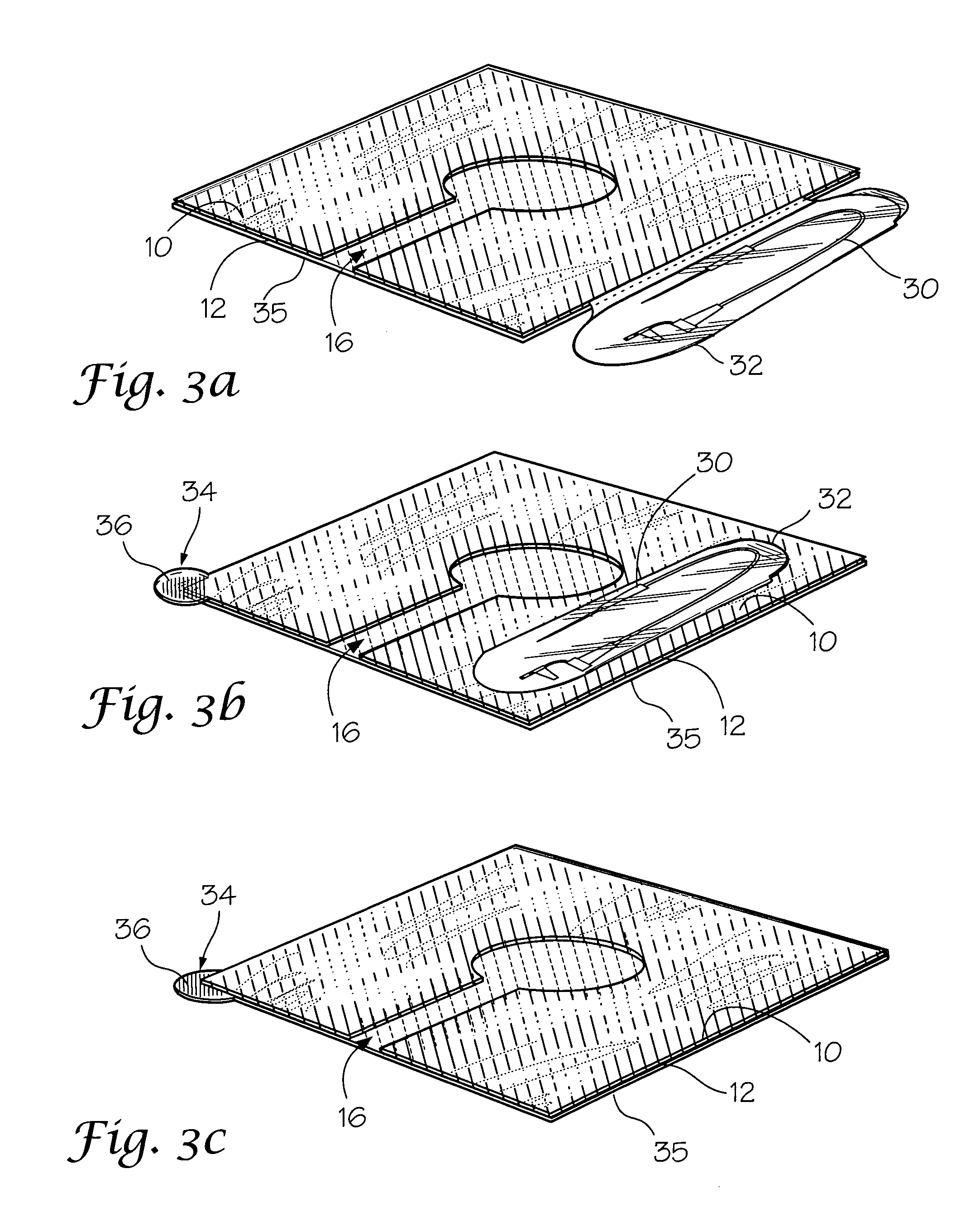Chest wound seal for preventing pneumothorax and including means for relieving a tension pneumothorax
a chest wound and pneumothorax technology, applied in the field of chest wound dressings for treating penetrating chest wounds, can solve the problems of life-threatening situations, increased pressure on the lungs, and difficulty in breathing
- Summary
- Abstract
- Description
- Claims
- Application Information
AI Technical Summary
Benefits of technology
Problems solved by technology
Method used
Image
Examples
Embodiment Construction
[0027]With reference to the drawings, the invention will now be described in more detail. Referring to FIG. 1, an occlusive dressing A for a penetrating chest wound is shown which includes a thin flexible sheet 10, and an adhesive layer 12 carried on a bottom side 14 of the sheet for adhering the sheet to skin surrounding the chest wound. A fluid drain, designated generally as 16, is included in adhesive layer 12 that is defined by an absence of adhesive on selected areas of sheet 10. Sheet 10 Is constructed and arranged to be applied over the wound to position a portion of fluid drain 16 directly over the wound for receiving fluid from the wound and channeling the fluid out from under sheet 10 while also preventing fluid intake into the wound.
[0028]In one embodiment, sheet 10 is formed from a generally fluid impermeable plastic in approximately an 8″×8″ square. However, the size and shape may be altered to suit particular applications and methods of manufacturing and the invention ...
PUM
 Login to View More
Login to View More Abstract
Description
Claims
Application Information
 Login to View More
Login to View More - R&D
- Intellectual Property
- Life Sciences
- Materials
- Tech Scout
- Unparalleled Data Quality
- Higher Quality Content
- 60% Fewer Hallucinations
Browse by: Latest US Patents, China's latest patents, Technical Efficacy Thesaurus, Application Domain, Technology Topic, Popular Technical Reports.
© 2025 PatSnap. All rights reserved.Legal|Privacy policy|Modern Slavery Act Transparency Statement|Sitemap|About US| Contact US: help@patsnap.com



